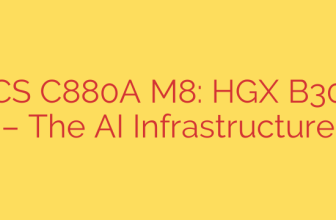
Major F5 Security Breach: Stolen BIG-IP Source Code and Zero-Day Flaws Exposed
In a significant development for network security, it has come to light that threat actors successfully breached systems and exfiltrated highly sensitive information related to F5 BIG-IP appliances. This incident is particularly alarming because the stolen data includes not only portions of the BIG-IP source code but also information on undisclosed zero-day vulnerabilities.
F5 BIG-IP devices are Application Delivery Controllers (ADCs) that sit at a critical juncture in many corporate networks. They manage traffic, balance loads, and secure applications, making them a high-value target for attackers. A compromise of these devices can provide a gateway to an organization’s most vital digital assets.
What Was Stolen and Why It Matters
The breach resulted in the theft of two extremely valuable types of data, each posing a distinct and serious threat to organizations using BIG-IP products.
Undisclosed Vulnerability Information: The attackers gained access to information about security flaws before they were publicly disclosed or patched. This gives them a crucial head start, allowing them to develop and deploy exploits before most organizations have a chance to defend themselves. These pre-disclosure vulnerabilities are essentially zero-days in the hands of malicious actors, creating a significant window of risk for unpatched systems.
BIG-IP Source Code: The exfiltration of source code is a long-term strategic threat. With access to the underlying code, hackers can meticulously analyze it offline to discover new, previously unknown vulnerabilities. This means we could see a wave of novel attack vectors targeting BIG-IP devices in the future, long after this initial breach is contained. It essentially provides a roadmap for future exploitation.
The combination of these two elements—immediate exploits and a resource for finding future ones—makes this a particularly dangerous security event.
Actionable Steps to Secure Your BIG-IP Appliances
Given the severity of this incident, administrators must take immediate and decisive action to harden their BIG-IP environments. Waiting is not an option, as threat actors are likely already weaponizing the stolen information.
Prioritize Immediate Patching: The single most important action is to immediately apply all available security patches and updates from F5. This is your primary defense against the known vulnerabilities that were stolen. Ensure you are subscribed to F5’s security advisories to receive timely notifications.
Harden Access to the Management Interface: Your BIG-IP’s management interface should never be exposed to the public internet. Strictly limit access to a small set of trusted IP addresses on a secure, isolated management network. Any access should be considered privileged and guarded accordingly.
Enforce Multi-Factor Authentication (MFA): Implement MFA for all accounts with access to your BIG-IP devices. This adds a critical layer of security that can prevent unauthorized access even if credentials are stolen or compromised.
Review and Audit Configurations: Conduct a thorough review of your BIG-IP configurations. Look for any unauthorized changes, suspicious accounts, or overly permissive rules. Revert any settings that deviate from security best practices.
Monitor for Suspicious Activity: Actively monitor logs for signs of compromise. Pay close attention to unusual login attempts, unexpected reboots, unexplained configuration changes, or abnormal traffic patterns originating from the BIG-IP appliance itself. Integrate BIG-IP logs with your SIEM for centralized monitoring and alerting.
The Broader Threat to Network Infrastructure
This breach is a stark reminder of a growing trend where cybercriminals target the core infrastructure that underpins enterprise IT. By compromising central network appliances like ADCs, firewalls, and VPNs, attackers gain a powerful foothold from which to launch further attacks across the network.
Organizations must treat the security of their network infrastructure with the same rigor as their endpoints and servers. These devices are the gatekeepers of your data, and their compromise can have catastrophic consequences. Stay vigilant, patch proactively, and operate under the assumption that these critical systems are prime targets for sophisticated adversaries.
Source: https://www.bleepingcomputer.com/news/security/hackers-breach-f5-to-steal-undisclosed-big-ip-flaws-source-code/








